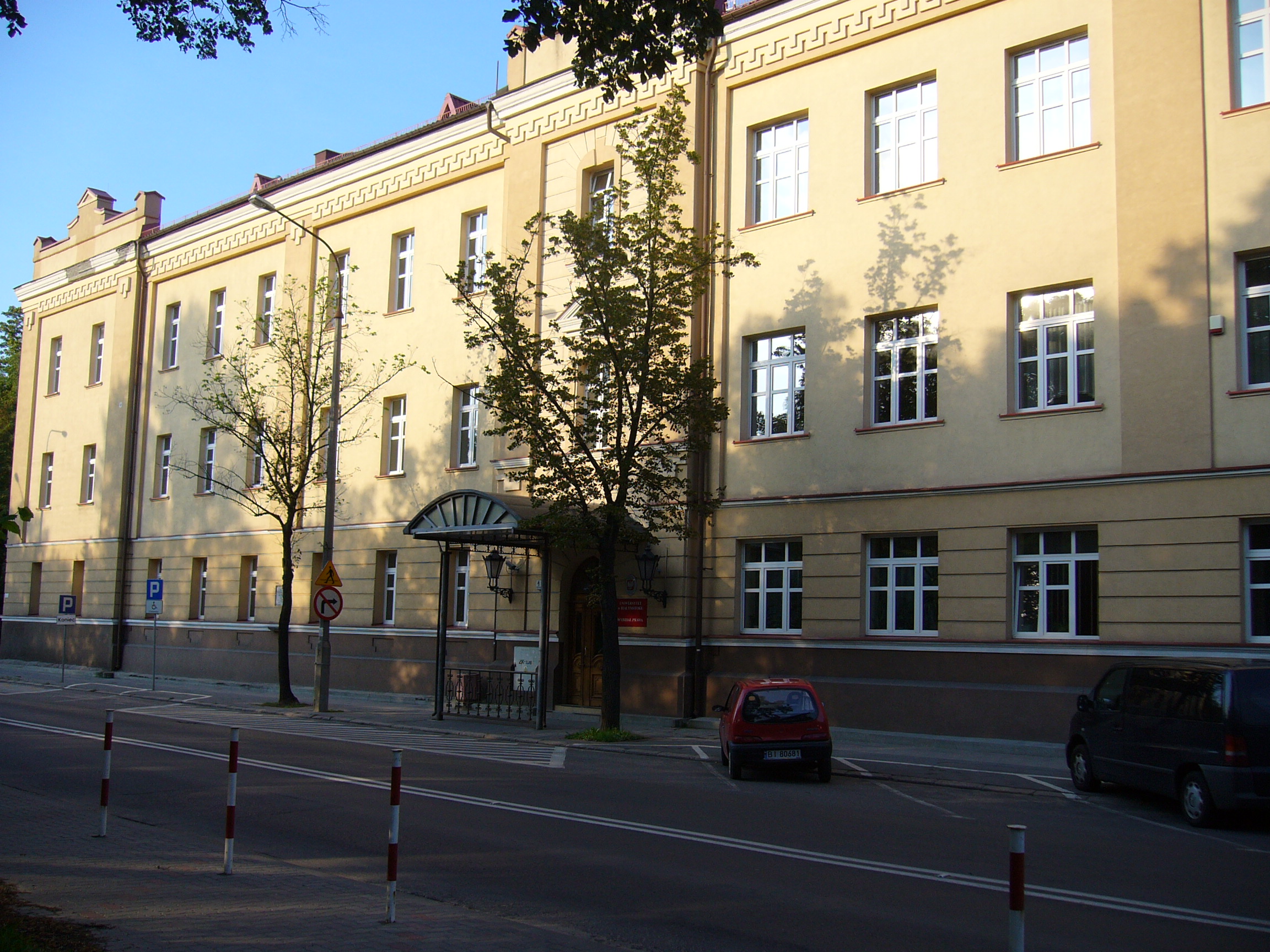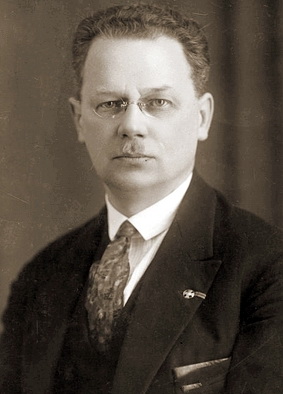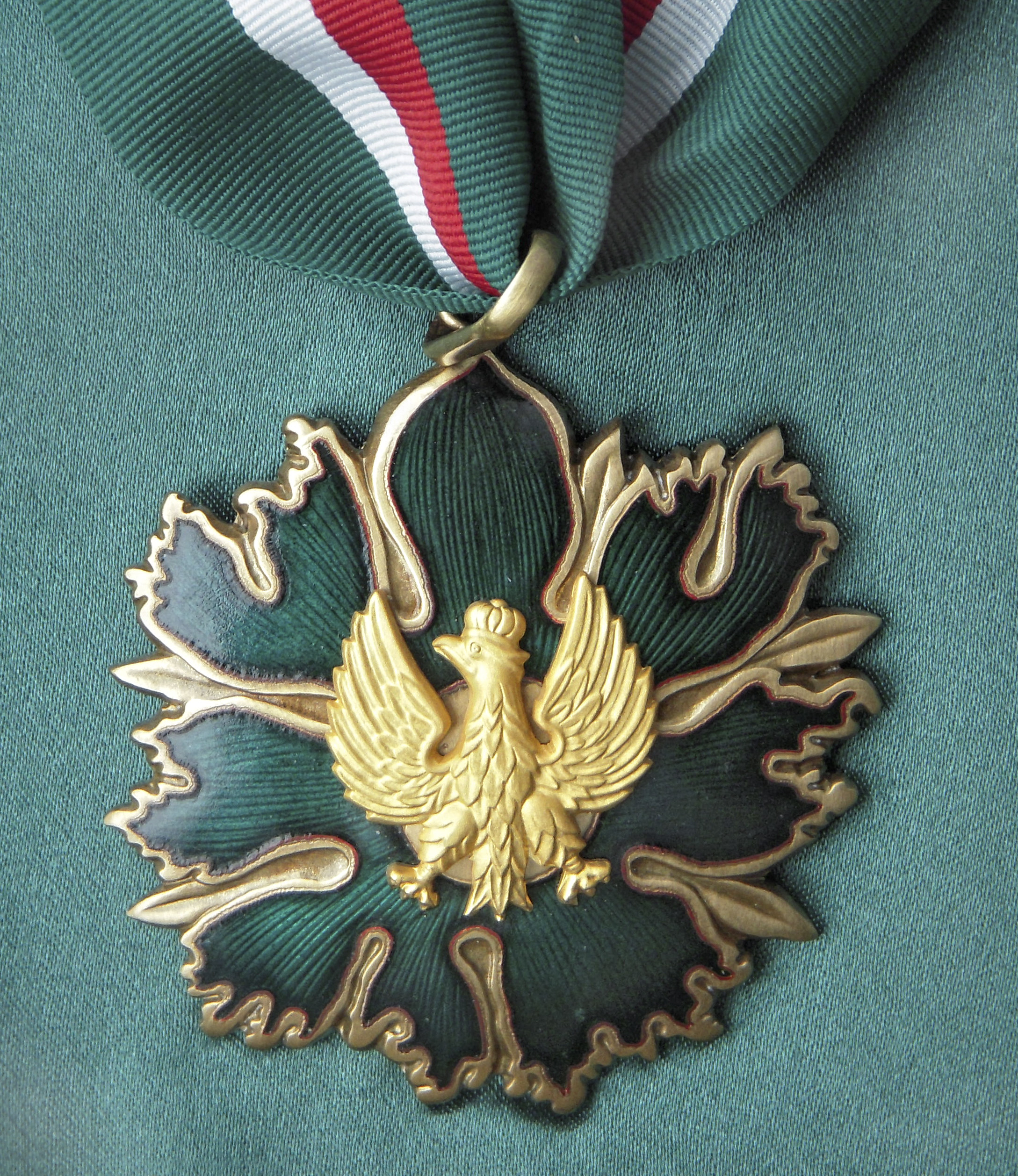|
Leon Tarasewicz
Leon Tarasewicz (born 14 March 1957 in Waliły) is Polish painter of Belarusian origin, professor of fine arts, academic teacher at the Academy of Fine Arts in Warsaw. Biography Tarasewicz was born into a working-class family. A graduate of the Art High School in Supraśl, and then the Faculty of Painting of the Academy of Fine Arts in Warsaw in the studio of Tadeusz Dominik (he received his diploma in 1984). From 1996, he ran a guest painting studio at the same university. He became a lecturer in painting space at the Faculty of Media Art and Scenography of the Academy of Fine Arts in Warsaw. In 2011, the President of Poland, Bronisław Komorowski, awarded him the title of professor of fine arts. He cooperates with Foksal Gallery in Warsaw, Galeria Monopol, Galeria Arsenal in Białystok, Galeria Krynki in Krynki, Galeria Ego in Poznań, and Galeria Biała in Lublin In 2008, he became the ambassador of the European Year of Intercultural Dialogue. He emphasizes his Belarusian ... [...More Info...] [...Related Items...] OR: [Wikipedia] [Google] [Baidu] |
Waliły
Waliły is a village in north-eastern Poland, in the administrative district of Gmina Gródek, within Białystok County, Podlaskie Voivodeship, close to the border with Belarus. It lies approximately north-west of Gródek and east of the regional capital Białystok. Notable people * Leon Tarasewicz, Polish artist of Belarusian Belarusian may refer to: * Something of, or related to Belarus * Belarusians, people from Belarus, or of Belarusian descent * A citizen of Belarus, see Demographics of Belarus * Belarusian language * Belarusian culture * Belarusian cuisine * Byelor ... origin. References Villages in Białystok County {{Białystok-geo-stub ... [...More Info...] [...Related Items...] OR: [Wikipedia] [Google] [Baidu] |
Lublin
Lublin is the ninth-largest city in Poland and the second-largest city of historical Lesser Poland. It is the capital and the center of Lublin Voivodeship with a population of 336,339 (December 2021). Lublin is the largest Polish city east of the Vistula River and is about to the southeast of Warsaw by road. One of the events that greatly contributed to the city's development was the Polish-Lithuanian Union of Krewo in 1385. Lublin thrived as a centre of trade and commerce due to its strategic location on the route between Vilnius and Kraków; the inhabitants had the privilege of free trade in the Grand Duchy of Lithuania. The Lublin Parliament session of 1569 led to the creation of a real union between the Crown of the Kingdom of Poland and the Grand Duchy of Lithuania, thus creating the Polish–Lithuanian Commonwealth. Lublin witnessed the early stages of Reformation in the 16th century. A Calvinist congregation was founded and groups of radical Arians appeared in the city ... [...More Info...] [...Related Items...] OR: [Wikipedia] [Google] [Baidu] |
Academy Of Fine Arts In Warsaw Alumni
An academy (Attic Greek: Ἀκαδήμεια; Koine Greek Ἀκαδημία) is an institution of secondary or tertiary higher learning (and generally also research or honorary membership). The name traces back to Plato's school of philosophy, founded approximately 385 BC at Akademia, a sanctuary of Athena, the goddess of wisdom and skill, north of Athens, Greece. Etymology The word comes from the ''Academy'' in ancient Greece, which derives from the Athenian hero, ''Akademos''. Outside the city walls of Athens, the gymnasium was made famous by Plato as a center of learning. The sacred space, dedicated to the goddess of wisdom, Athena, had formerly been an olive grove, hence the expression "the groves of Academe". In these gardens, the philosopher Plato conversed with followers. Plato developed his sessions into a method of teaching philosophy and in 387 BC, established what is known today as the Old Academy. By extension, ''academia'' has come to mean the accumulation, dev ... [...More Info...] [...Related Items...] OR: [Wikipedia] [Google] [Baidu] |
University Of Białystok
The University of Bialystok is the largest university in the north-eastern region of Poland, educating in various fields of study, including humanities, social and natural sciences and mathematics. It has nine faculties, including a foreign one in Vilnius. Four faculties have been awarded the highest scientific category “A”. The University of Bialystok has the right to confer doctoral degrees in ten fields, as well as postdoctoral degrees in law, economics, chemistry, biology, history and physics. Over 13,000 students are being educated in 31 fields of study, including doctoral studies and postgraduate studies. The university employs nearly 800 academics, almost 200 professors among them. Every year the university carries out approximately 60 research projects, financed from domestic and foreign funds; it also benefits from the structural funds. Among the university's many accomplishments are its participation in 6th and 7th Framework Programme for Research, Technological De ... [...More Info...] [...Related Items...] OR: [Wikipedia] [Google] [Baidu] |
Paszport Polityki
Paszport Polityki (Polityka's Passport) is an annual Polish cultural award presented by the weekly magazine ''Polityka'' since 1993. It is presented in six major categories: literature, film, theatre, classical music, popular music, visual arts (and entertainment up until 2005). In 2002 a new, seventh category was added: creator of culture while in 2016 the eighth category added was digital culture. According to the editorial declaration, the award is a distinction for creators who make the fastest progress, surprise with new achievements, their activities bode well in the future and thus deserve care, support and promotion in the world. The award's name was conceived as a symbolic passport to the world's art.''Paszporty "Polityki" 1998''. "Polityka" Nr. 1/1999 (2174), p. 44, 2 January 1999 (in Polish) It is usually given to relatively young creators, often for outstanding debuts. List of laureates See also *List of European art awards *Nike Award * Silesius Poetry Award *A ... [...More Info...] [...Related Items...] OR: [Wikipedia] [Google] [Baidu] |
List Of Recipients Of The Order Of Polonia Restituta
The List of recipients of the Order of Polonia Restituta includes notable recipients of the Order of Polonia Restituta sorted by their profession. Where possible it also lists their country of origin and order grade. People highly distinguished in more than one field have duplicate entries. Art *Marian Konieczny — Polish sculptor *Władysław T. Benda — Polish-American artist *Olga Boznańska — Polish painter *Bohdan Butenko — Polish cartoonist * Józef Hen - Polish novelist (Commander's Cross with Star) *Ryszard Horowitz — Polish-American photographer *Countess Karolina Lanckorońska — Polish art historian and collector *Kazimierz Ostrowski — Polish painter (Officer's Cross) *Jerzy Zaruba — Polish graphic artist (Knight's Cross; Officer's Cross) *Adam Kossowski — Polish painter and muralist * Boleslaw Jan Czedekowski — Polish portrait painter Business and economics *Grzegorz Kołodko — Finance Minister of Poland (Commander's Cross) *Edward Szczepanik — ... [...More Info...] [...Related Items...] OR: [Wikipedia] [Google] [Baidu] |
Waldemar Dąbrowski
Waldemar, Valdemar or Woldemar is an Old High German given name. It consists of the elements ''wald-'' "power", "brightness" and ''-mar'' "fame". The name is considered the equivalent of the Slavic name Vladimir, Volodymyr, Uladzimir or Włodzimierz. The Old Norse form ''Valdamarr'' (also ''Valdarr'') occurs in the Guðrúnarkviða II as the name of a king of the Danes. The Old Norse form is also used in Heimskringla, in the story of Harald Hardrada, as the name of a ruler of Holmgard (Veliky Novgorod), in this case as a translation of the Slavic name ''Volodimer''.Alison Finlay (2004). ''Fagrskinna: A Catalogue of the Kings of Norway''. Brillp. 236 The ''Fagrskinna'' kings' sagas also have ''Valdamarr'' as the translation of Slavic ''Volodimer''/''Vladimir'', in reference to both Vladimir the Great and Vladimir Yaroslavovich. The German form was introduced to Scandinavia as ''Valdemar'' in the 12th century, with king Valdemar I of Denmark. People with the name Royalty ... [...More Info...] [...Related Items...] OR: [Wikipedia] [Google] [Baidu] |
Ministry Of Culture And National Heritage (Poland)
Ministry of Culture and National Heritage of the Republic of Poland ( pl, Ministerstwo Kultury i Dziedzictwa Narodowego) is a governmental administration office concerned with various aspects of Polish culture. It was formed on 31 October 2005, from transformation of ''Ministry of Culture of the Republic of Poland''. The ministry can trace its history back to 1918 when the Ministry of Art and Culture was established. It was suppressed in 1922 due to rationalization of public expense and structural reform of the government. It was reestablished within the temporary communist government in 1944 and has existed continuously henceforth until the merger with the Ministry of Sport in 2021. List of ministers References External links Official website of Ministry of Culture and National Heritage Poland Poland, officially the Republic of Poland, is a country in Central Europe. It is divided into 16 administrative provinces called voivodeships, covering an area of ... [...More Info...] [...Related Items...] OR: [Wikipedia] [Google] [Baidu] |
Gloria Artis Medal For Merit To Culture
The Gloria Artis Medal for Merit to Culture ( pl, Zasłużony Kulturze Gloria Artis) or Gloria Artis Medal, is a departmental decoration of Poland in arts awarded by the Ministry of Culture and National Heritage of the Republic of Poland to persons and organizations for distinguished contributions to, or protection of the Polish culture and national heritage. There are three classes for the medal: gold, silver and bronze with a green, blue or claret ribbon, respectively, with central white and red stripes. This award was instituted on 17 June 2005. as a replacement of the honorary badge „Zasłużony Działacz Kultury”, as part of the general reform in management of culture and education. [...More Info...] [...Related Items...] OR: [Wikipedia] [Google] [Baidu] |
Podlaska Opera And Orchestra
Podlaska Opera and Orchestra in Białystok ( pl, Opera i Filharmonia Podlaska – Europejskie Centrum Sztuki im. Stanisława Moniuszki w Białymstoku) is a cultural institution in Białystok, capital of Podlaskie Voivodeship Podlaskie Voivodeship or Podlasie Province ( pl, Województwo podlaskie, ) is a voivodeship (province) in northeastern Poland. The name of the province and its territory correspond to the historic region of Podlachia. The capital and largest cit ... of Poland. It is the largest artistic institution in north-eastern Poland and the most modern cultural center in this part of Europe. History The beginnings of the Symphony Orchestra of the Podlaskie Opera and Philharmonic date back to 1954, when the State Symphony Orchestra was established in Bialystok. The orchestra's musicians did not have their own headquarters at that time - rehearsals and concerts were held, among others at the Aleksandr Węgierki Drama Theatre or Guest Palace in Bialystok. After twenty ... [...More Info...] [...Related Items...] OR: [Wikipedia] [Google] [Baidu] |
Kresy
Eastern Borderlands ( pl, Kresy Wschodnie) or simply Borderlands ( pl, Kresy, ) was a term coined for the eastern part of the Second Polish Republic during the interwar period (1918–1939). Largely agricultural and extensively multi-ethnic, it amounted to nearly half of the territory of pre-war Poland. Historically situated in the eastern Polish–Lithuanian Commonwealth, following the 18th-century foreign partitions it was annexed by Russia and partly by the Habsburg monarchy ( Galicia), and ceded to Poland in 1921 after the Peace of Riga. As a result of the post-World War II border changes, none of the lands remain in Poland today. The Polish plural term ''Kresy'' corresponds to the Russian ''okrainy'' (), meaning "the border regions". It is also largely co-terminous with the northern areas of the "Pale of Settlement", a scheme devised by Catherine the Great to limit Jews from settling in the homogenously Christian Orthodox core of the Russian Empire, such as Moscow and Sa ... [...More Info...] [...Related Items...] OR: [Wikipedia] [Google] [Baidu] |




